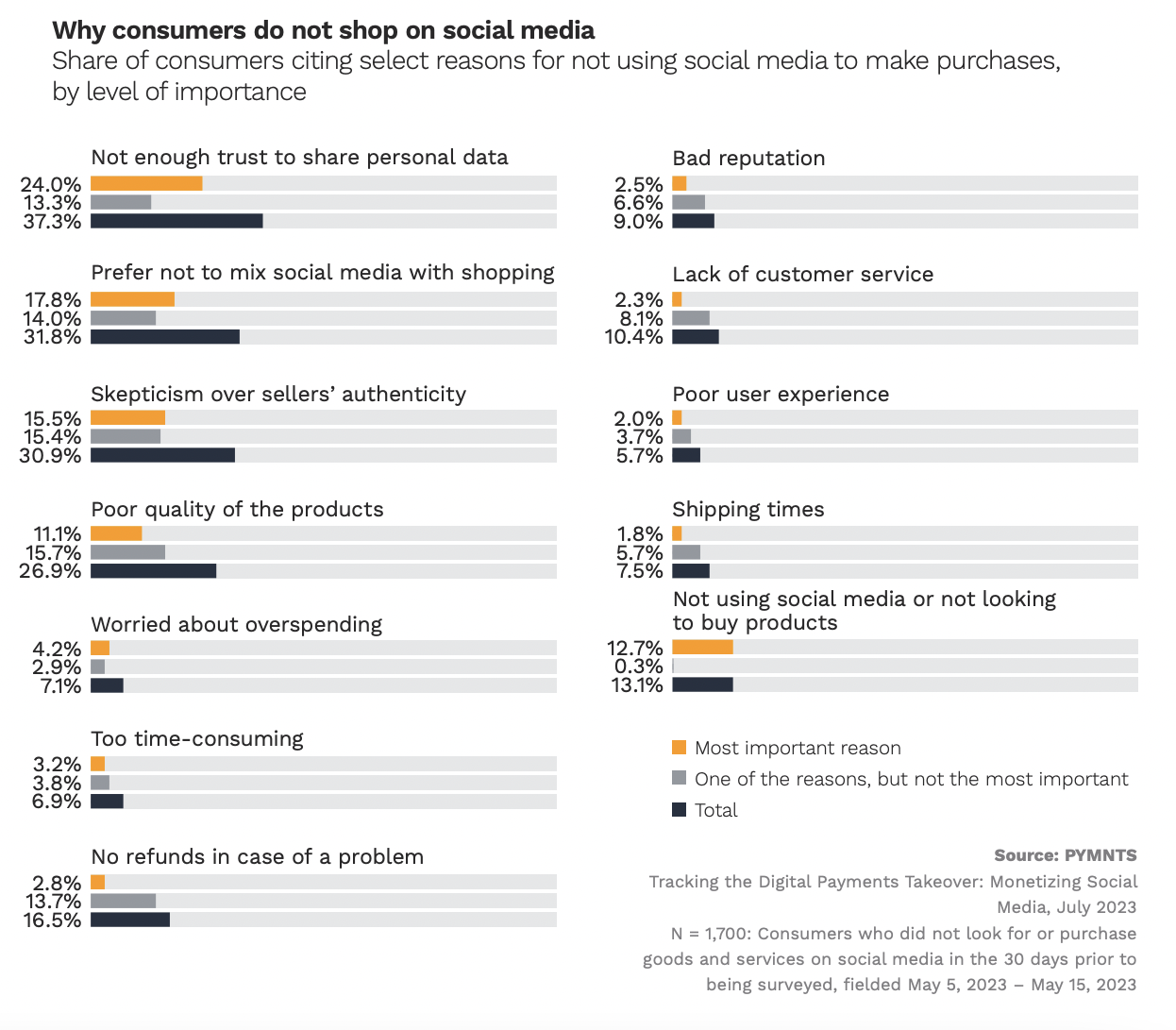
Many consumers are put off by social commerce, not wanting to have their social connection interrupted by product promotion.
For the report “Tracking the Digital Payments Takeover: Monetizing Social Media,” PYMNTS Intelligence surveyed nearly 3,000 U.S. consumers to understand the factors driving them to shop — or not to shop — on social media, among other matters.

The study found that 57% of consumers did not look for or purchase goods and services on social media in the 30 days before being surveyed. Among the most common reasons they did not browse or make purchases via social media platforms is that they simply prefer not to mix social media with shopping.
This was the second-most popular reason, following trust concerns about these platforms’ use of their data, suggesting that it is an issue for many users.
Social media platforms, for their part, continue to integrate commerce into the experience. Instagram, for instance, has been expanding its creator marketplace around the world, while Pinterest has been extending its reach into new types of shoppable content. In the fall, YouTube unveiled features that simplify the marketing and sale of products within videos meant to provide creators with additional opportunities to monetize their content.
Solution providers, too, are seeing the opportunity to drive sales. Shopline, for example, shared new features for its social media integration, such as targeting capabilities and ad effectiveness tracking tools, and social commerce platform Trnd debuted its platform for creators, looking to offer shopper-friendly tools for influencers to sell products.
Earlier in the month, consumer experience platform Fermat announced that it raised $17 million in its Series A funding round to create a social commerce shopping platform using artificial intelligence and machine learning.
For all PYMNTS retail coverage, subscribe to the daily Retail Newsletter.